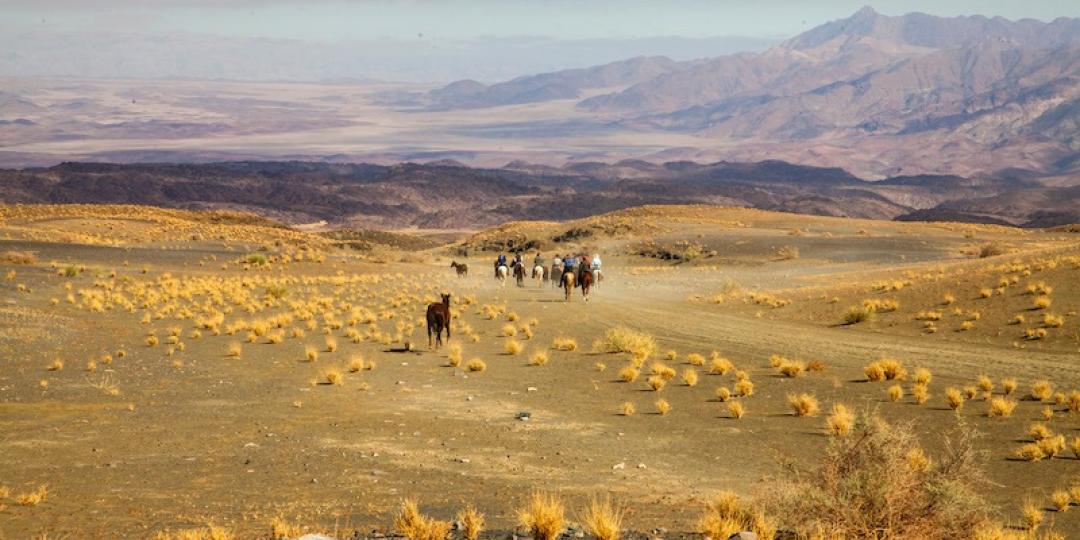For travellers looking for a challenge and an adventure while in Namibia, the Namibia Horse Safari Company is worth keeping in mind.
The safaris are done on horseback, and while dome-style tents are carried along, guests are actively encouraged to sleep under the stars. The tour also comes with a warning, guests should be riding fit before they arrive. “60km or six hours a day in the saddle is no joke,” says Andrew Gillies, Lead Guide and Director. “Plus being in the environment 24/7 takes a huge toll on the unfit. Struggling with a sore body is also unfair on the horse, particularly if you are not able to ride with an independent seat, which requires a high degree of riding fitness.”
Most of the trips are 10 days. Accommodation on the first and last night being in upper-range lodges. From then on, it is camping with stretchers, bedrolls, and hot bucket showers. Toilets are either the company’s mobile chemical toilets, or long-drops in some of the camps.
According to Gillies the most challenging trip is the Namib Desert Safari. The total distance covered comes to 300km, with one of the days requiring a 60km ride. The route runs from near Sossuvlei to the Atlantic Ocean (Swakopmund), across the central Namib Desert. “Despite the aridity, there is quite a bit of plains game here, including giraffe in the dry washes near one of the most beautiful camps.”
There is also the more fast-paced Damara Elephant Safari. “This ride starts with a bang as the horses are very well aware that there is big game about (lion and elephants), and it is pretty hot. It is also fast, with the longest day being 50km. The trip is quite mountainous, with huge coastal plains. It is very remote, up north from the Twyfelfontein area to the coast,” says Gillies.
Gillies says that the Desert Canyon Safari, which incorporates the Fish River Canyon and heads down to the Orange River, is the one recommended for first-timers nervous about their ability. “We are not doing this ride in 2020 however, due to the high demand for our Damaraland ride, and because we will be doing an epic 1000km month-long ride at the time).
Safety and practicalities
Each of the trips is undertaken with a back-up crew who follow the riders in vehicles. “We have a professional chef who also drives one of the vehicles, and a truck driver (female) who also cares for our precious horses, can cook, helps groom the horses, entertain guests, set-up camp etc.”
A logistics expert runs the operations. Two members of the back-up crew set-up and breakdown the camps, shoe the horses, and help with the grooming and feeding of the horses.
“EMed are a very professional road and air-rescue operation, and all our guests are automatically covered by the company to facilitate quick evacuation if necessary, as insurance companies can often take their time in responding,” says Gillies. “Our lead guide carries a satellite phone at all times, even on horseback.” The team has also done advanced first-aid trading.
The horses are rested for between six and eight weeks between safaris, and during the summer when it is too hot to ride in the desert.
“This sort of experience is quite intoxicating,” says Gilles. “About 40% of our guests return, most multiple times. Some have ridden with us 12 times, sometimes several times a year. Something about these safaris is addictive, especially if you live and work in a city.”






















